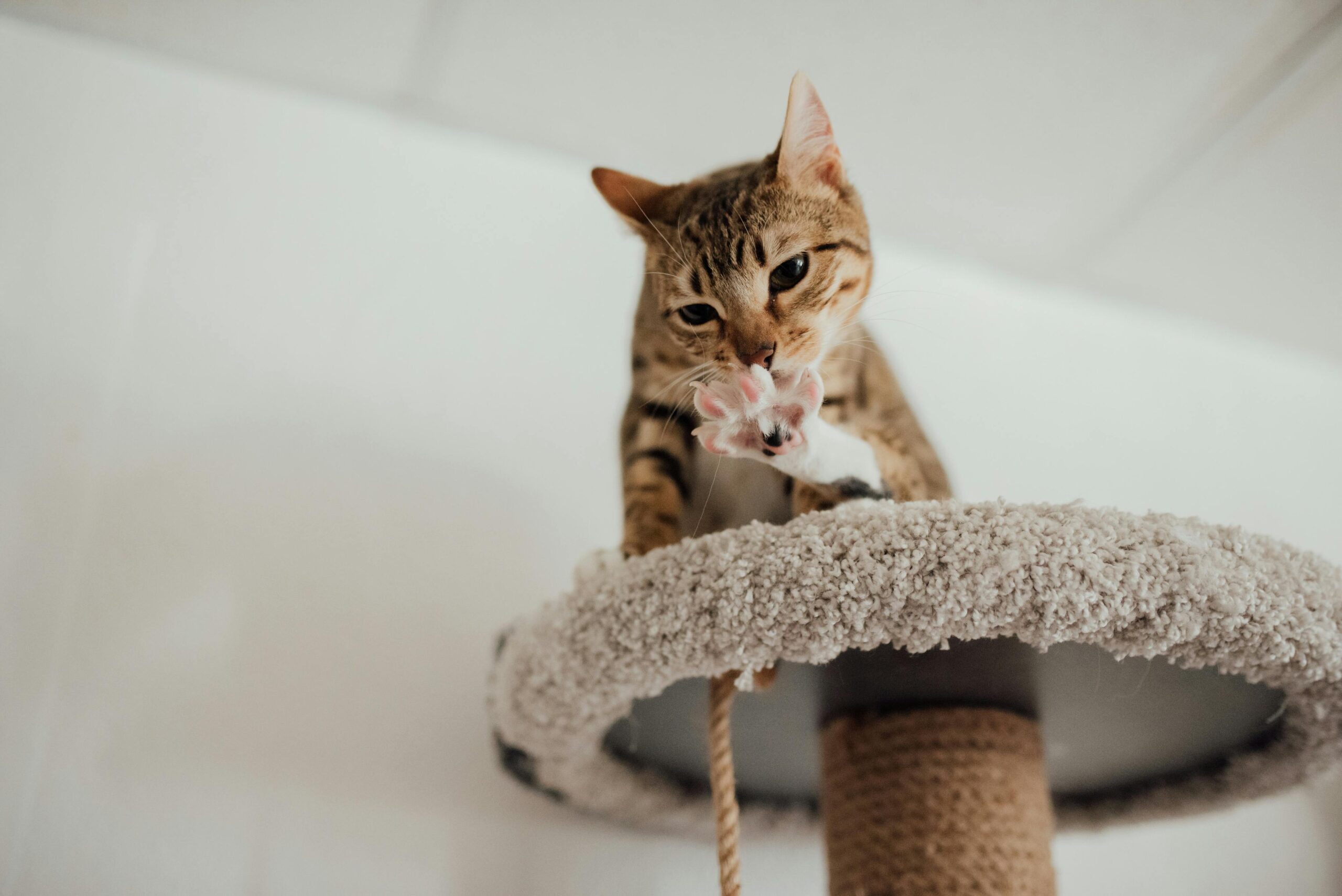Is Declawing Cats Bad?
Declawing cats does more harm than good.

Declawing cats does more harm than good.

Yes—this procedure can cause pain and long-term health issues for our feline friends. Not only does declawing a cat affect their physical well-being, but it can also change their behavior and quality of life.
Here’s why it’s not the best move to declaw your cat.
An onychectomy—aka declawing—isn’t just a simple claw trim. It’s actually a surgical procedure where the last bone of each toe is removed. Yep, that means it’s more like amputating part of your cat’s paw than giving them a manicure.
Because this procedure is invasive, it can lead to serious pain, long-term discomfort, and even changes in behavior. Many cats struggle with walking afterward, and some may become more anxious or avoid the litter box altogether.
Cats rely on their claws for many natural behaviors, like playing, scratching, and marking their territory. Here’s why keeping those claws is the best move for your kitty:
Hopefully we’ve convinced you to keep your cat’s claws intact — so now you might be wondering what you can do instead if you’re dealing with a scratch-happy kitty?
There are plenty of humane, effective alternatives to declawing. With the right tools and a bit of patience, you can protect your furniture and keep your cat happy.
Start with a good scratching post—or two. These allow cats to stretch, mark their territory, and file their claws naturally. In fact, according to a Lemonade commissioned survey of 2,000 American cat and dog parents—57% of cat parents said a scratching post is essential to keeping their feline happy and healthy. Look for posts or pads made of materials like sisal or cardboard, and place them in areas your cat already likes to scratch. Sprinkling catnip over the surface can help make them more appealing. These typically range from $30 to $40, depending on size and materials.
Trimming your cat’s nails every couple of weeks can also reduce damage from scratching. Other helpful tools include catnip toys to keep your kitty stimulated and Feliway, a synthetic feline facial pheromone spray that may help reduce stress-related scratching. You can also try deterrent sprays on furniture or use protective covers while your cat adjusts to new scratching surfaces.
Avoid materials that cats love to scratch—like wicker or sisal—when choosing new furniture. And if scratching becomes excessive or destructive, consider checking in with your veterinarian or a certified cat behaviorist to rule out underlying issues.
Finally, positive reinforcement goes a long way. Reward your cat with praise, treats, or attention when they use their scratching post appropriately. A little encouragement can help build better habits—without resorting to painful, irreversible procedures like declawing.
We know you only want what’s best for your cat, which is why you might want to get them set up with pet insurance. Pet insurance can help take the sting out of unexpected vet bills.
Applying for pet insurance is fast, easy, and even kind of fun!
A few quick words, because we <3 our lawyers: This post is general in nature, and any statement in it doesn’t alter the terms, conditions, exclusions, or limitations of policies issued by Lemonade, which differ according to your state of residence. You’re encouraged to discuss your specific circumstances with your own professional advisors. The purpose of this post is merely to provide you with info and insights you can use to make such discussions more productive! Naturally, all comments by, or references to, third parties represent their own views, and Lemonade assumes no responsibility for them. Coverage and discounts may not be available in all states.
Please note: Lemonade articles and other editorial content are meant for educational purposes only, and should not be relied upon instead of professional legal, insurance or financial advice. The content of these educational articles does not alter the terms, conditions, exclusions, or limitations of policies issued by Lemonade, which differ according to your state of residence. While we regularly review previously published content to ensure it is accurate and up-to-date, there may be instances in which legal conditions or policy details have changed since publication. Any hypothetical examples used in Lemonade editorial content are purely expositional. Hypothetical examples do not alter or bind Lemonade to any application of your insurance policy to the particular facts and circumstances of any actual claim.